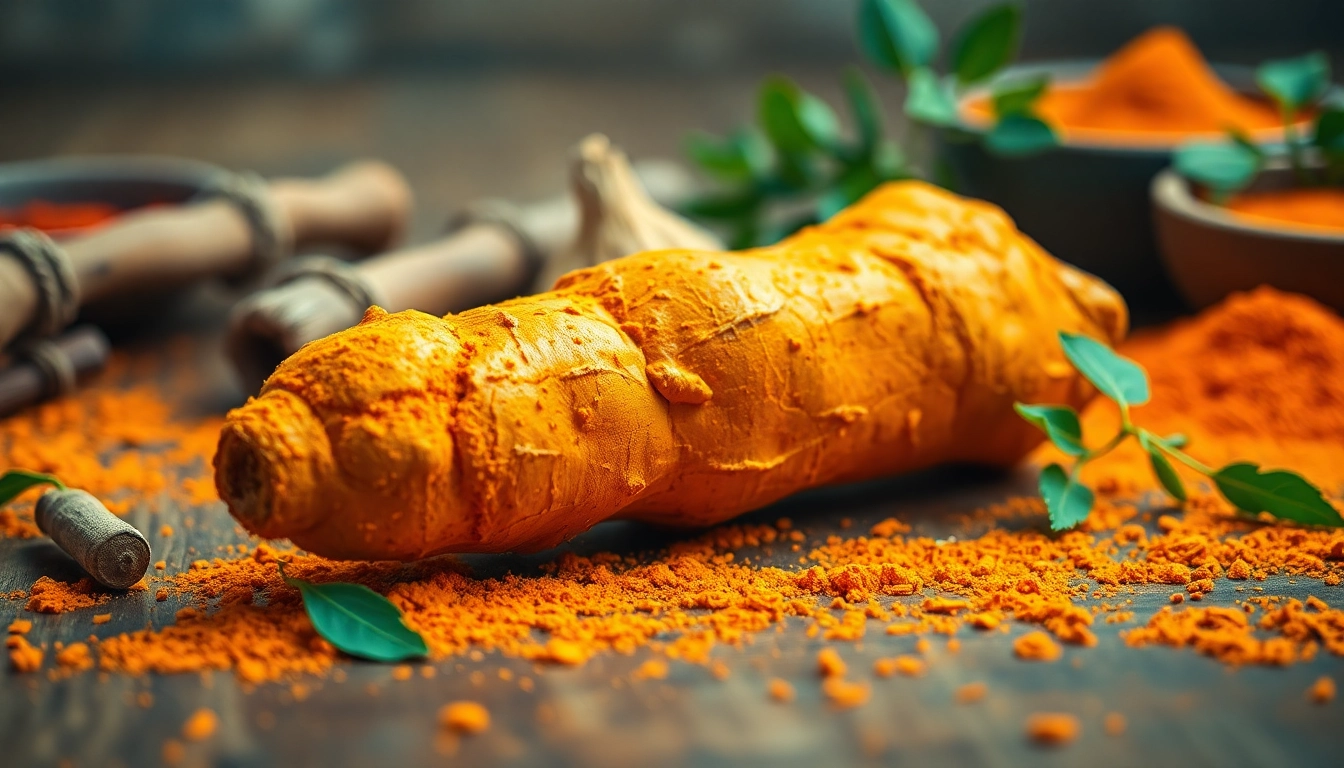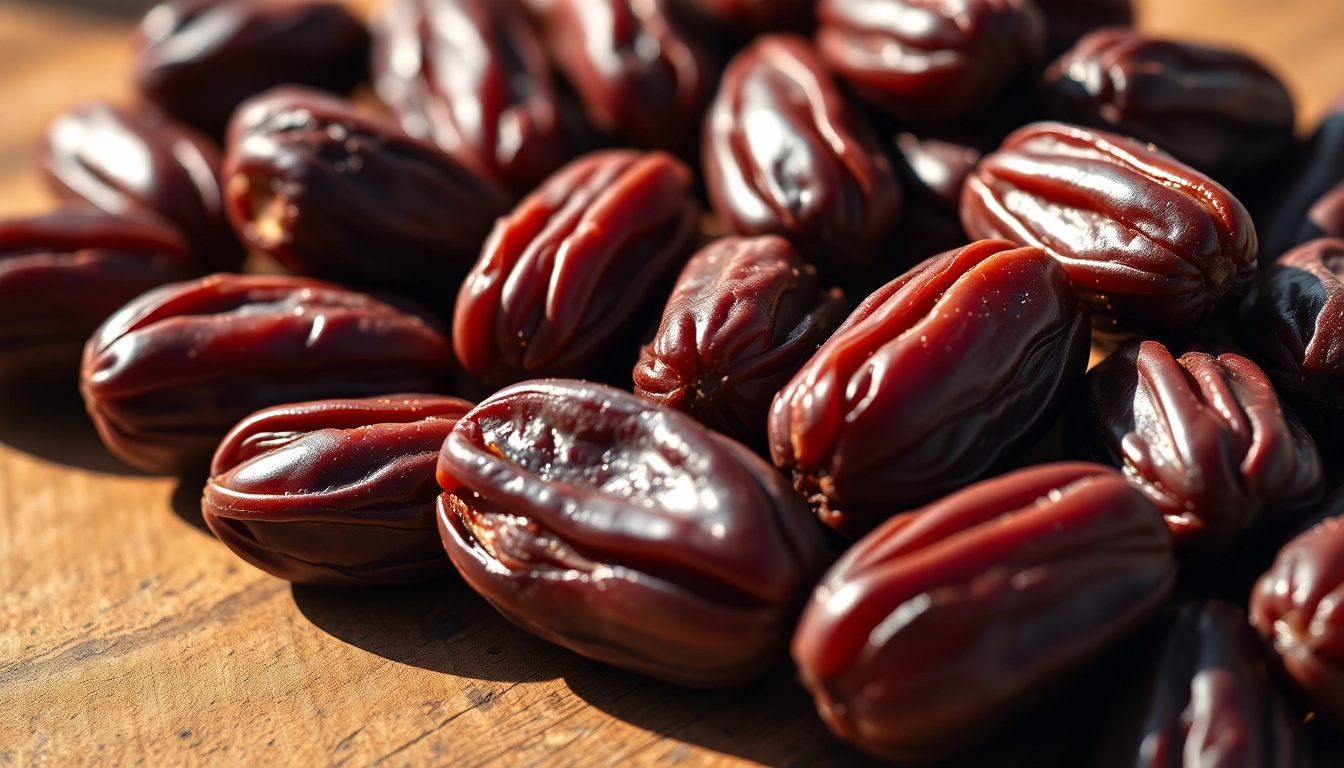Understanding Turmeric Root: Origins and Benefits
Turmeric root, a vibrant yellow rhizome, has captured the attention of health enthusiasts and culinary experts alike. This ancient spice, renowned not only for its striking color but also for its myriad health benefits, dates back thousands of years. Recognized for its culinary and medicinal properties, turmeric root is an essential ingredient in many traditional dishes and a staple in holistic medicine. The incorporation of turmeric into modern diets continues to gain traction, with an increasing number of people seeking to harness the power of this remarkable root. For an authentic experience with Turmeric Root, it’s crucial to understand its origins, benefits, and various uses.
The Historical Significance of Turmeric Root
Turmeric’s history can be traced back over 4,000 years to the Vedic culture in India, where it was celebrated not only as a spice but also as a dye and in religious rituals. Ancient texts depict turmeric as a symbol of prosperity, purity, and fertility. The spice made its way to the Middle East, Southeast Asia, and eventually the rest of the world, making it a truly global commodity. Besides its culinary applications, turmeric was traditionally used for its medicinal properties in Ayurvedic and Traditional Chinese Medicine. In these practices, the root was believed to cleanse the body of toxins and treat a variety of ailments.
Health Benefits Supported by Research
Numerous studies have corroborated the health benefits of turmeric root, primarily attributed to its active compound, curcumin. This potent ingredient is recognized for its anti-inflammatory, antioxidant, and anti-cancer properties. Research indicates that curcumin may help alleviate conditions such as arthritis, cardiovascular diseases, and even certain types of cancer. Additionally, curcumin’s ability to enhance cognitive function and improve mood has garnered attention in recent years, suggesting potential benefits for mental health as well.
How to Incorporate Turmeric Root into Your Diet
Popular Recipes Featuring Turmeric Root
Integrating turmeric root into your culinary repertoire is simpler than it may seem. Here are some popular recipes that showcase the versatility of this root:
- Turmeric Rice: Cook basmati rice with turmeric, garlic, and bay leaves for a colorful side dish.
- Golden Milk: A soothing beverage made with milk, turmeric, black pepper, and sweeteners like honey or maple syrup, perfect for relaxation.
- Turmeric-Infused Soup: Add grated turmeric root to vegetable or chicken soup for an earthy flavor and nutritional boost.
- Vegetable Stir-Fry: Incorporate turmeric into your favorite veggie stir-fry for a vibrant and healthful meal.
Tips for Cooking with Fresh Turmeric Root
When cooking with fresh turmeric root, one should consider a few key tips to maximize flavor and health benefits:
- Peeling and Grating: Use a vegetable peeler to remove the outer skin before grating or chopping the root. Grating releases more flavor and nutrients.
- Color Caution: Turmeric can stain surfaces and clothing, so handle it with care using gloves and protective coverings.
- Pairing with Fat: Since curcumin is fat-soluble, cooking turmeric root with coconut oil or other healthy fats can enhance absorption.
Balancing Flavors: Pairing Turmeric with Other Ingredients
Balancing the unique flavor profile of turmeric is essential in cooking. It has a warm, earthy taste that pairs well with:
- Spices: Cumin, coriander, and cinnamon can complement turmeric well.
- Citrus: Lemon and lime juices can brighten up dishes and balance turmeric’s earthiness.
- Herbs: Fresh herbs such as cilantro and parsley can provide freshness to turmeric-laden dishes.
Turmeric Root and Its Therapeutic Properties
Understanding Curcumin: The Active Compound
Curcumin is the primary bioactive component in turmeric root, accounting for its distinct yellow color and many of its health benefits. It boasts significant anti-inflammatory and antioxidant properties, which play a crucial role in reducing oxidative stress in the body. Studies suggest that curcumin can modulate various signaling pathways, making it effective in treating chronic inflammatory conditions and potentially slowing the progression of diseases.
Health Conditions That May Benefit from Turmeric Root
Research indicates turmeric root and its active compound, curcumin, can provide relief and benefits for various health conditions, including, but not limited to:
- Arthritis: Curcumin’s anti-inflammatory properties make it a popular natural treatment for joint pain.
- Heart Disease: Turmeric may improve heart health by enhancing endothelial function and regulating blood pressure.
- Cognitive Disorders: Some studies imply that curcumin may help mitigate Alzheimer’s disease symptoms by reducing plaque buildup in the brain.
- Digestive Issues: Turmeric may promote healthy digestion by stimulating bile production and aiding in gut health.
Consulting Healthcare Professionals: When to Seek Advice
While turmeric root is generally safe for most individuals, it is advisable to consult a healthcare professional when considering it as a remedy for serious health conditions. Those on blood thinners, pregnant women, or those with gallbladder disease should exercise caution. Healthcare professionals can provide tailored advice based on individual health conditions, potential interactions, and appropriate dosage.
Choosing Quality Turmeric Root Products
How to Select Fresh Turmeric Root
When selecting fresh turmeric root, consider the following tips to ensure the best quality:
- Appearance: Choose roots that are firm, unblemished, and bright in color. Avoid those that appear shriveled or overly dried out.
- Size Matters: Generally, smaller roots offer a more intense flavor and higher concentration of beneficial compounds.
- Local Sources: Purchasing from local farmers’ markets or reputable grocery stores can ensure freshness.
Recognizing Quality Turmeric Powder and Supplements
Not all turmeric powders or supplements are created equal. Look for the following characteristics to determine quality:
- Color: High-quality turmeric powder should be bright yellow-orange and have a strong aroma.
- Label Information: Ensure it indicates an appropriate curcumin concentration. Supplements usually specify curcumin content on labels.
- Certifications: Seek out products that have third-party testing or certifications for purity and potency.
Understanding Labels: What to Look for in Turmeric Products
Reading labels is crucial when purchasing turmeric products. Here are important factors to consider:
- Ingredient List: Minimal ingredients are usually better. Avoid products with artificial additives or fillers.
- Dosage Recommendations: Look for clear guidelines on how to take the product for optimal results.
- Manufacturer Reputation: Research brands that adhere to high manufacturing standards and have positive customer reviews.
Potential Side Effects and Considerations
Possible Allergies and Interactions with Medications
Turmeric is generally safe; however, some individuals may experience allergic reactions or gastrointestinal issues. Furthermore, turmeric can interact with certain medications, including blood thinners and diabetes medications, potentially affecting their efficacy. It is crucial to consult healthcare professionals before integrating turmeric into your health regimen, especially if you are taking other medications.
Recommended Dosage for Various Uses
The recommended dosage of turmeric root can vary widely depending on the form of turmeric being consumed:
- Fresh Root: 1-3 grams per day is typically considered sufficient for health benefits.
- Powder: 1-2 teaspoons (about 2-5 grams) daily.
- Supplements: Follow label instructions or consult a healthcare provider for tailored recommendations.
When to Avoid Using Turmeric Root
Individuals should avoid using turmeric in high amounts or supplement forms if they have certain health conditions, such as:
- Gallbladder Problems: Turmeric may exacerbate issues related to bile production.
- Bleeding Disorders: Because turmeric can thin the blood, those with bleeding disorders should be cautious.
- Before Surgery: Discontinue use at least two weeks prior to surgery due to its blood-thinning properties.
In conclusion, turmeric root is a powerful and multifaceted ingredient that can offer a wide range of benefits when properly integrated into everyday life. By exploring its origins, health benefits, cooking tips, and considerations for use, individuals can make informed decisions about how best to incorporate turmeric into their wellness routines. With its rich history and growing body of research, turmeric remains a staple in many kitchens and medicine cabinets, promising to enhance health and flavor for years to come.















Leave a Reply